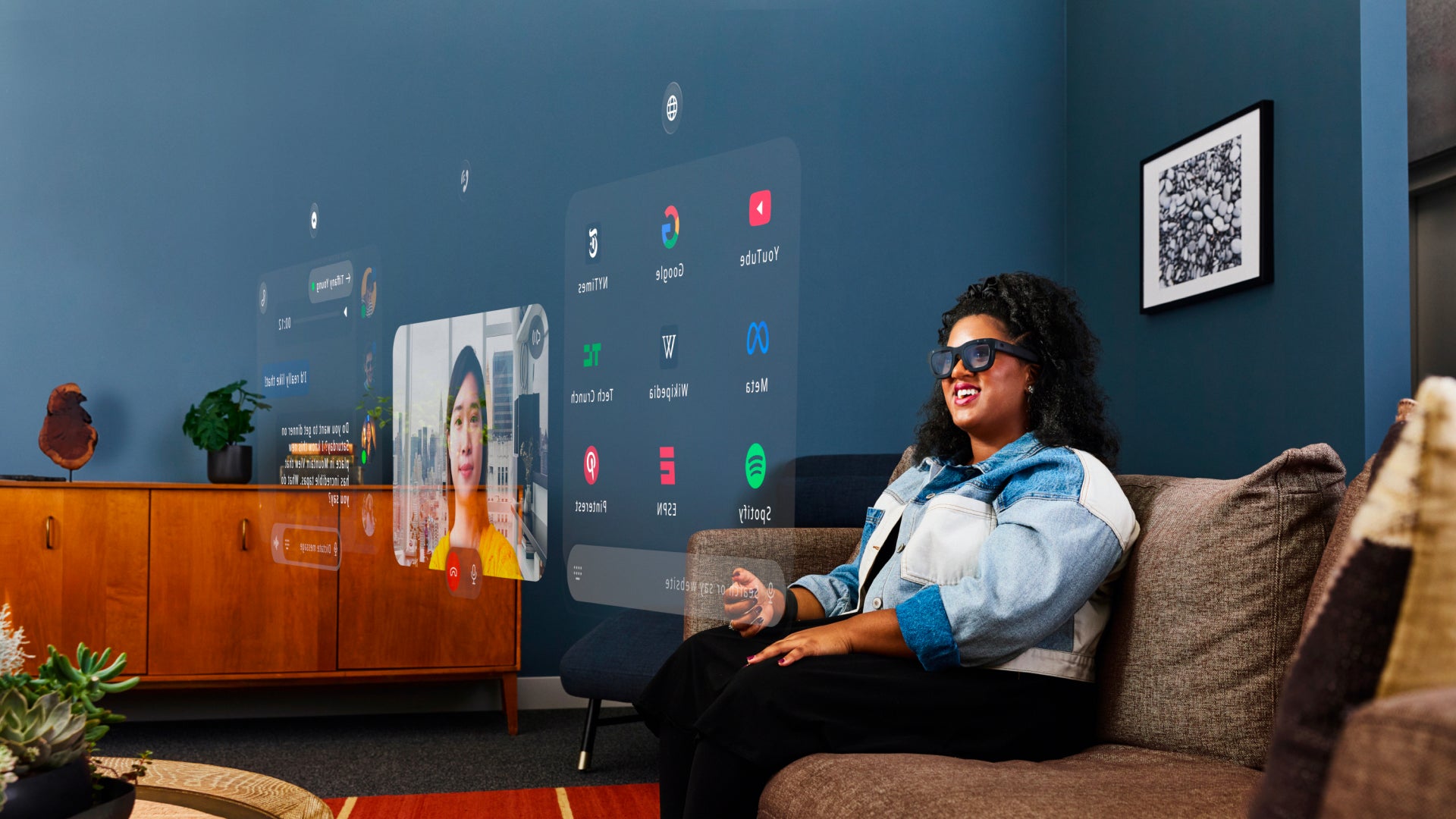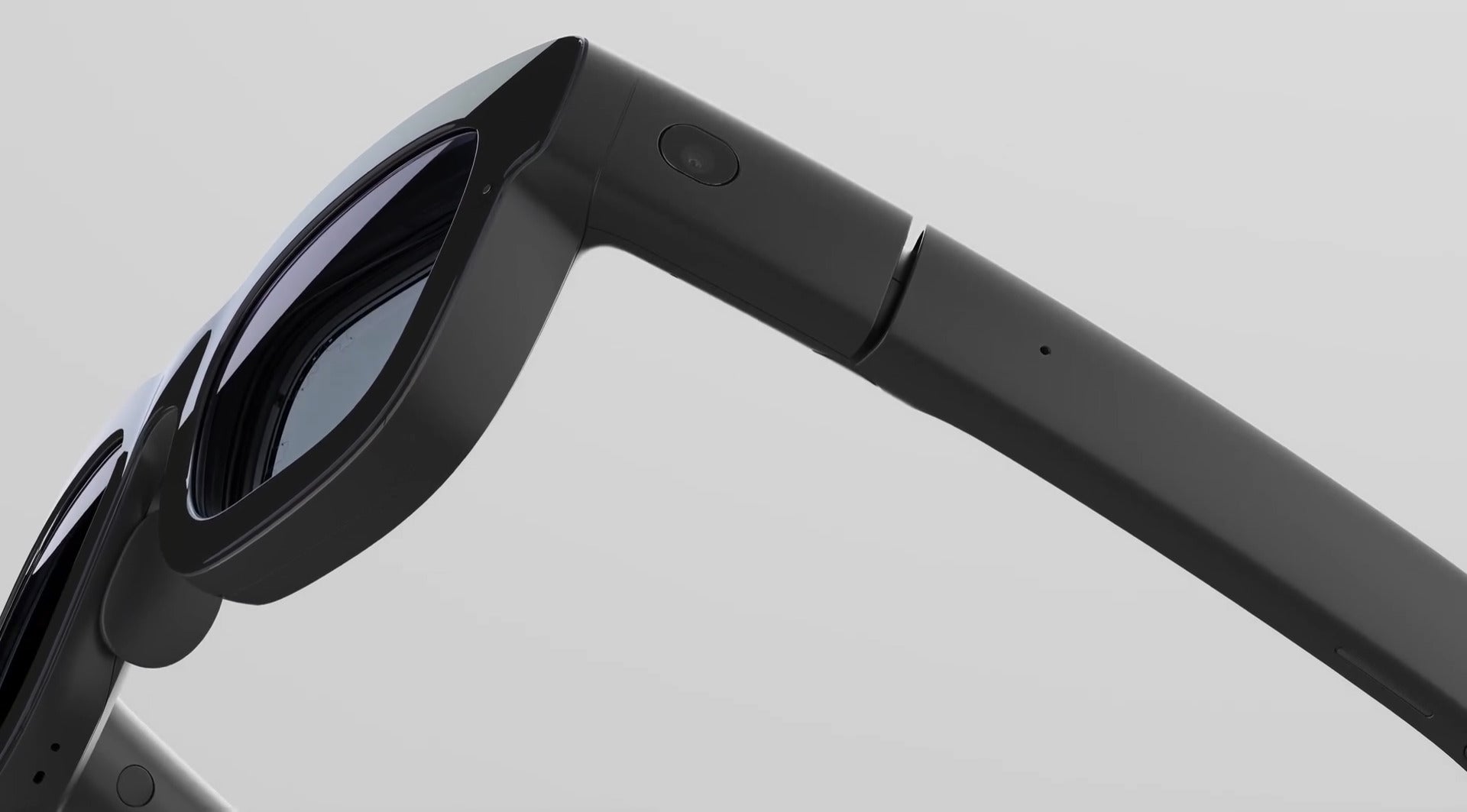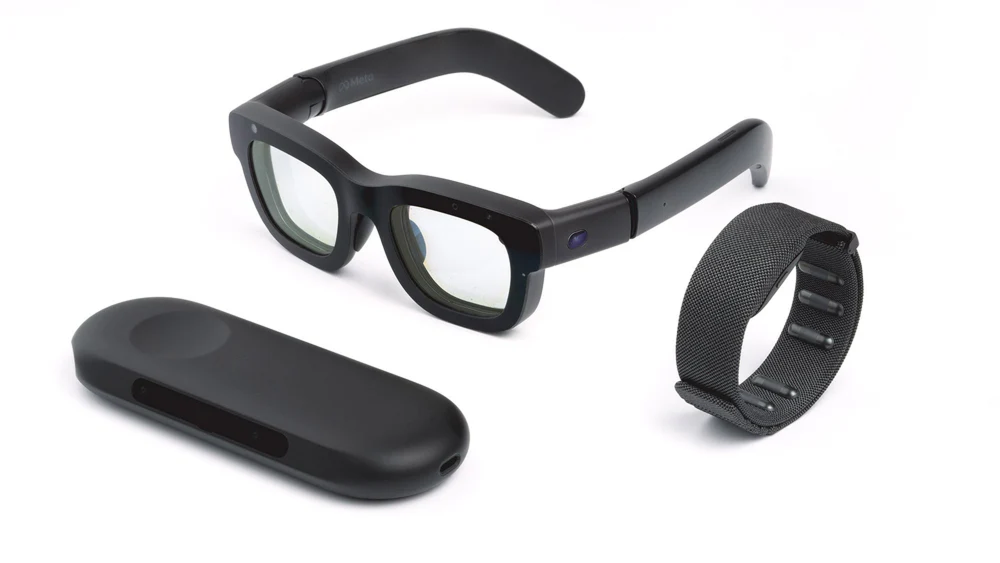Back in September 2024, during its Connect event, Meta quietly unveiled something extraordinary: a prototype pair of AR glasses called Meta Orion. It wasn’t just a sleek pair of glasses—it was a leap straight out of science fiction. A few lucky reviewers got to try them, and while reactions varied, one sentiment echoed across the board:
“This is the first XR device that could genuinely compete with the smartphone.”

What Are the Meta Orion AR Glasses?
On the surface, Meta’s Orion glasses look like regular specs—albeit a bit bulkier, with chunkier rims. But that modest frame packs a jaw-dropping array of technology:
- 70-inch FOV display
- Eye and hand tracking
- Built-in sensors and cameras
- 2-hour battery life
- 3D holographic projection
Meta is able to cram all that tech into the glasses via aid of a wireless compute puck—a small, smooth device about the size of a smartphone. You can stash it in your pocket or clip it to your belt, and as long as it's within 15 feet, you’re good to go.

A New Kind of Control: Neural Wristband & Gestures
Meta didn’t stop at just eye tracking or gesture sensors. The Orion also ships with a neural input wristband that reads the electrical signals in your arm muscles using electromyography (EMG). In plain terms: you can control the glasses just by thinking about moving your fingers and thumbs—even if your hands are resting at your sides.
Navigation combines eye tracking with subtle hand gestures: a pinch between thumb and forefinger and a flick of the wrist. Meta’s CTO, Andre Bosworth, in this interview, claims that Meta is actively working on increasing the wristband’s sensitivity, to the point where virtual writing with your hands is possible.

No Passthrough—Just Pure Optical AR
Unlike Meta’s Quest headsets, Orion doesn't use passthrough cameras to simulate the world. Instead, it uses a see-through optical waveguide display, facilitated by silicon carbide lenses. Micro projectors embedded in the frames beam light into the lenses, which then project crisp, 3D holograms directly into your field of view.
You're not staring at a screen inside goggles. You're seeing digital content seamlessly layered over your real-world environment. That’s proper AR.

And while the glasses do have cameras, they're used for environmental sensing, not display. The on-board AI can analyze your surroundings—recognizing objects, interpreting context, and offering real-time assistance. For example, look at a shelf of groceries and the AI could suggest a recipe based on what it sees.
Thermal Magic: Why They Don’t Overheat
Cramping all that tech into a compact form should create a thermal nightmare. But Meta solved this with magnesium alloy frames, which are not only lightweight but excellent at dissipating heat. Function meets form.
What Can Orion Actually Do?
Among other features, Orion is designed to:
- Take photos and videos
- Conduct AI-enhanced video calls
- Interact with digital objects in real space
- Recognize and respond to physical environments
- Offer seamless AI support on-the-go
The most viral example? A demo where Orion's AI scans kitchen ingredients and suggests a recipe in real time.
When Will Meta Orion Be Available?
Short answer: Never.
Meta only produced about 1,000 units of Orion. It's a concept device, meant to demonstrate the bleeding edge of spatial computing—not to hit the shelves. According to Meta, the cost of bringing Orion to market today would be around $10,000 (~R175,800). Not exactly ready for consumer adoption.

But all hope isn’t lost.
Rumors and a leak from Meta recently revealed it’s suspending work on the next Quest headset to focus on a device codenamed Penguin—a lighter, streamlined headset with an external compute puck, expected by late 2026. In other words, Orion's DNA will live on.
What Now?
While Orion remains an experimental marvel, there’s still plenty happening in the smart eyewear world. The Ray-Ban and Oakley Meta smartglasses continue to evolve, and the industry as a whole is racing toward smaller, smarter, and more useful XR wearables.
In the meantime, if you’re eager to explore the frontier of immersive tech:
Get your AR, VR, and 360° gear from 180by2 —
- Same-day delivery within Gauteng (orders before 2pm)
- XR consultations and training workshops
- The best curated tools for creators, educators, and explorers


























